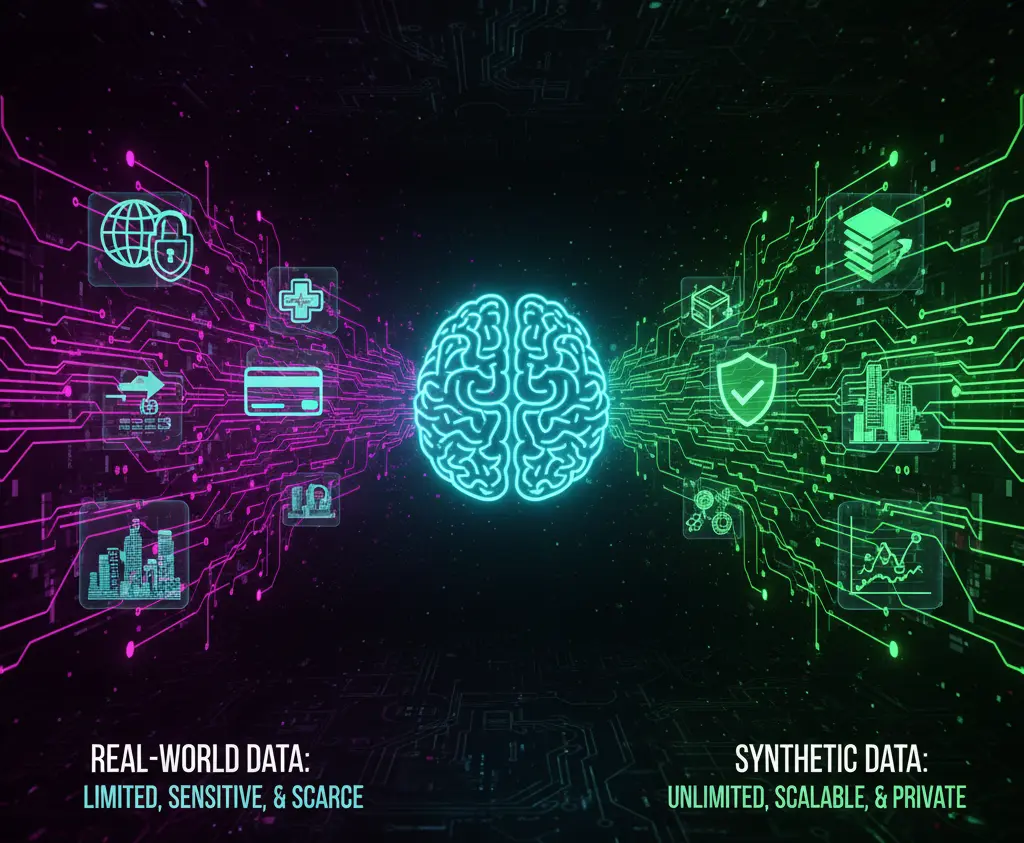Machine Learning with Synthetic Data
In the age of artificial intelligence, data is the fuel that powers machine learning. The more data you have, the better your models usually perform. But what happens when real-world data is too limited, too expensive, or too sensitive to use? That is where synthetic data steps in as a game changer.
Synthetic data is data that is artificially created and it resembles the statistical characteristics of real-world data. Companies are able to generate data using algorithms, simulations or sophisticated models instead of gathering thousands of medical pictures or millions of driving situations. This is revolutionizing industries because machine learning projects are now cheaper, safer and faster under this approach.
What Is Synthetic Data and Why Do We Need It?
Real-world data is not always easy to get. It may be restricted by privacy laws, hard to label, or simply rare in some cases. For example:
- Patient records are sensitive in the sense that hospitals might be reluctant to share them as required by the privacy regulations.
- There are too many possible road hazard scenarios and a self-driving car company cannot easily gather data on all of them..
- Financial institutions might not have sufficient cases/examples of fraudulent transactions.
Synthetic data addresses these issues by generating realistic/real-world yet artificial data that may be safely utilized to train and test machine learning models.
How Companies Generate Synthetic Datasets
There are several methods for generating synthetic data:
- Generative Adversarial Networks (GANs):
GANs are AI models in which two neural networks compete with each other to produce extremely realistic data.They are highly employed in the production of artificial images, videos and even human-like voices. - Simulators:
Simulators are used by industries such as automotive or aerospace to generate data. For example, autonomous vehicle companies simulate millions of virtual miles with every weather condition, road type, or obstacle imaginable. - Rulw-Based Algorithms:
This is common in finance and healthcare research.
Benefits of Synthetic Data
Synthetic data is not just some handy shortcut. It has certain unique benefits:
- Privacy Protection: Synthetic data does not belong to real people, so there is no such thing as privacy issues, and it is safer to share and use.
- Scalability: An enterprise can create as much synthetic data as desired, and also makes sure that machine learning models have sufficient examples to train on.
- Balancing Datasets: Real-world data tends to be unbalanced (i.e. there are fewer fraud cases than valid transactions). These gaps can be filled by synthetic data to generate balanced datasets.
- Cost-Effectiveness: It is costly to gather and label massive data sets. These costs can be reduced by generating synthetic data.
Challenges of Synthetic Data
Despite its advantages, synthetic data is not a perfect solution. Some key challenges include:
- Realism: Synthetic data may fail to capture the complexity of real-world scenarios. Those models that have been trained using solely synthetic data may not work well in real scenarios.
- Bias: In a case where synthetic data is founded on biased real data or poorly-designed algorithms, then it is possible to reproduce or even increase these biases.
- Generalization: Models that are trained on synthetic data can have difficulty with generalization to completely new, real-world inputs.
These difficulties imply that synthetic data should not be utilized in place of real data, but rather in combination with real data.
Real-World Applications of Synthetic Data
- Autonomous Cars:
These difficulties imply that synthetic data should not be utilized in place of real data, but rather in combination with real data. - Healthcare Imaging:
Synthetic MRI or CT scans help researchers train diagnostic AI tools without violating patient privacy. This will speed up medical AI innovation whilst maintaining rigid data policies. - Finance:
To ensure that models are taught to detect suspicious activity even in the event that there is a shortage of real fraud examples, banks generate synthetic transaction data to train fraud detection systems. - Cybersecurity:
Intrusion detection systems are tested using synthetic network traffic, and do not involve sensitive or confidential information.
Final Thoughts
Synthetic data is becoming one of the most powerful tools in the machine learning toolkit. It allows businesses to overcome the challenges of data scarcity, privacy concerns, and cost limitations. While it cannot fully replace real-world data, it works as a valuable complement, making models more robust, scalable, and versatile.
From autonomous vehicles to healthcare imaging and fraud detection, industries are already unlocking new possibilities with synthetic data. With the advancement of the technology of generating data, we may anticipate that synthetic data will become even more prominent in the future of AI.
For organizations looking to scale machine learning responsibly, synthetic data is not just an option, it is the future.









